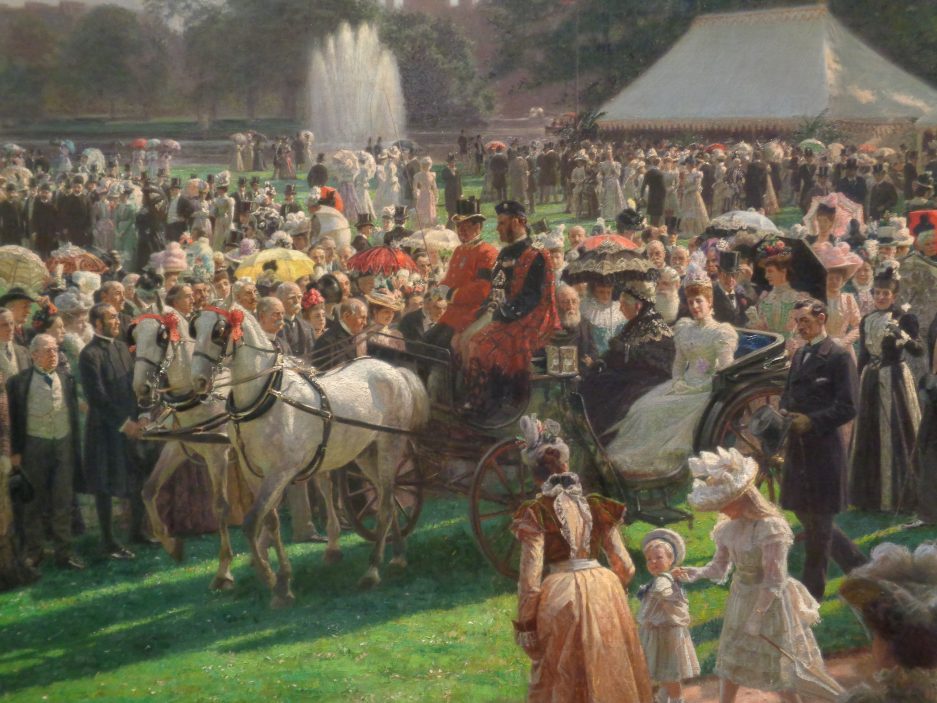It’s not only the homes, castles and palaces of royalty and the aristocracy and gentry that are open to the public to visit but also homes of well-known writers, scientists, and artists. From the likes of Beatrix Potter, Agatha Christie, Charles Dickens, Sir Walter Scott, Thomas Gainsborough, and Charles Darwin – the length and breadth of Britain is filled with houses that give us a sense of the time its owners lived.
London is no exception, and the capital boasts several houses that the public can visit. One of them is Sambourne House or 18 Stafford Terrace which was the home of the noted artist and cartoonist, Linley Sambourne (1844-1910) who worked for Punch magazine for 40 years and was responsible for many of the cartoons published by the magazine that have become defining images of late Victorian Britain. He also accepted commissions for book illustrations, advertisements, magazine covers and illustrations.

Sambourne and his wife Marion moved into 18 Stafford Terrace in 1875 a year after their marriage and this became their family home where Sambourne also created a studio and used the bathroom as a photo darkroom, and Marion raised their two children – Maud and Roy. The house was also located not far from those of other artists such as Frederic Lord Leighton and fostered the idea of this part of London as an artists’ colony.
The house on the outside looks no different from the rest of the neighbourhood but once you enter you feel as if you’ve stepped back in time. Thanks to Sambourne’s descendants (via his daughter Maud) and the Kensington and Chelsea Council (who administer the site), the house is preserved very much as Linley and Maud lived in it with their two children and three servants.
18 Stafford Terrace gives the visitors a glimpse into the lifestyle of the Victorian middle class and is a wonderful example of the Aesthetic Movement which fostered the idea of “art for art’s sake,” that art was meant to be beautiful. One of the most famous proponents of the movement was William Morris and in Samboure’s house, we see examples of Morris’ work particularly with the wallpaper used.


The house is clearly designed as a place to live and entertain as Judith Flanders in The Victorian House described below how the Sambournes entertained and what was served during these dinners:
“Marion Sambourne kept a notebook with dinner party menus. In 1879 at a dinner for eight people she served artichoke soup, fillets of salmon, leg of lamb; salad a new potatoes, stewed celery; wild duck, watercress; Aldershot pudding, plum pudding; soft roes and herring and biscuits. In the 1890s, as the Sambournes became more prosperous, another menu, this time for a ‘gentleman only’ dinner for Linley Sambourne’s friends, consisted of; caviar; clear soup, cold salmon, pigeons, tomato salad; roast lamb, peas; haricots verts, roast chicken, salad, Russian salad; jelly, macedoine of fruit; anchovy savoury, cream cheese; ices – pineapple cream, raspberry water (that is, pineapple ice cream and raspberry sorbet). Along with 22 bottles of wine and 15 of champagne. Linley Sambourne complained the next day of a slight bilious headache that lasted all day.”
Apart with regards to entertaining, the house was also designed for work. Sambourne created a studio where he drew and where he used himself and staff as models for his cartoons.
One main impression we had during our visit was how dark the interiors were due to the dark wood panelling and furniture also made from dark wood. Some rooms also felt cluttered in the typical Victorian fashion of decorating every nook and cranny of the house with various furniture, bibelots, photos and other bric a brac. We felt sympathy for the maids who in an era of open coal fires had to keep these rooms clean and dusted – the Sambournes might have embraced the Aesthetic movement but they also embraced to the full the Victorian idea that an empty space exists only to be filled.


On the positive, the house is well laid out and there is no intrusive and patronising interpretation. There is information about the objects in the house but again its unobtrusive and while there are staff and volunteers around, they let visitors go around the house at their own pace but are available if you have any questions or want to learn more about the house and its history.
My main criticism is that there is no helpful signage that would direct visitors to the house from Kensington High Street. But other than that, the house is worth visiting as a perfect showcase of how the middle class lived during the late Victorian era.
The bloggers visited Sambourne House on 14 December 2022. Photos of the interiors taken by bloggers.
For more information regarding visiting the house, please go to: https://www.rbkc.gov.uk/museums/sambourne-house
